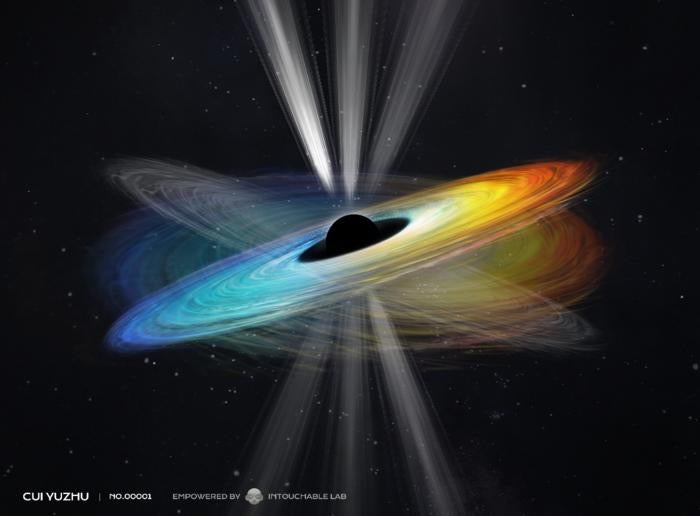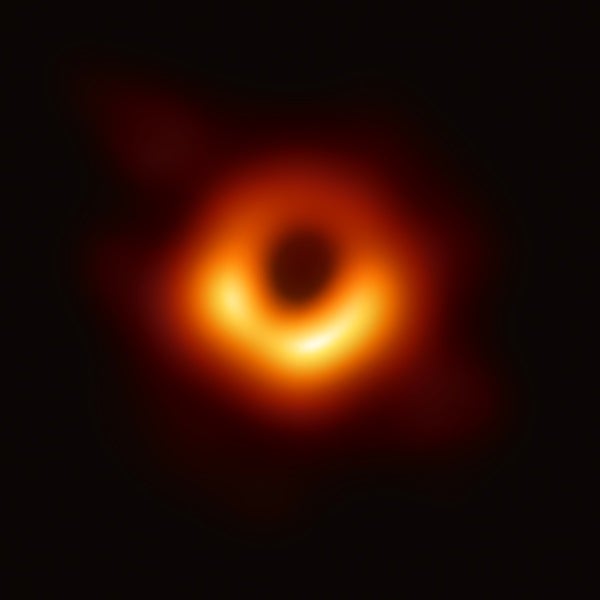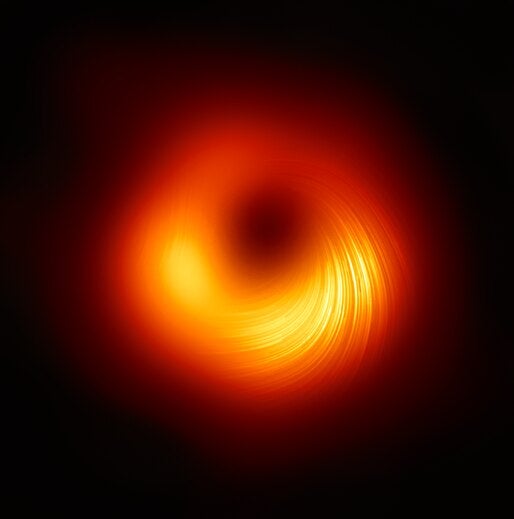
The giant elliptical galaxy M87 has been the front-runner in breaking news concerning black holes for a third time now. The first time was in April 2019, when the Event Horizon Telescope (EHT) captured the very first, ground-breaking image of a black hole (a black hole’s shadow, to be precise). M87 was also the first to reveal its luminous jet, way back in 1918. But just recently, on Sept. 27, 2023, an international team led by Yuzhu Cui published a study announcing that they have valid proof of M87’s spinning supermassive black hole.
The galaxy lies about 55 million light-years away and the supermassive black hole it holds weighs in at 6.5 billion solar masses — that’s more than 1,000 times more massive than the supermassive black hole in the center of the Milky Way. Astronomers know that retrieving any information from these inescapable objects is not for the weak-hearted, nor is trying to solve their puzzles. In this case, with the aid of precessing jets and accretion disks, Einstein’s General Theory of Relativity comes to the rescue yet again.


Mysterious wonders
Some galaxies are what astronomers call active, known formally as active galactic nuclei, or AGN for short. Activity means they are massive emitters of energy. They may become active when their central supermassive black hole accretes enough gas to form an accretion disk and emits light outshining the rest of the galaxy. Some AGNs can also create powerful jets of gas and radiation that travel at significant fractions of the speed of light. Depending on a couple of factors, they can be classified as either quasars or blazars. Despite knowing the enormous energies AGN may produce, the mechanisms of their energy production have been elusive.
For a long time, astronomers have believed that energy from a spinning black hole expels material perpendicular to its host galaxy’s orbital plane. But evidence of spinning black holes has been hard to come by until now. Cui’s team reviewed a baseline of 22 years’ worth of data from a global network of radio telescopes. They discovered a recurring 11-year cycle of precessional jets and found that the rotational axes of both the black hole and the accretion disk were misaligned.
Wondering no more
The collaboration of more than 20 telescopes and observatories around the world gathered high-resolution data very much needed for a “thorough analysis [which is] essential to obtain this achievement,” said Cui in a press release. After careful examination, the team found that the misalignment then causes a shift or wobble of the jet resulting in precession. Because the models nicely fit the observational data, this is enough to confirm that the supermassive black hole is indeed spinning and contributes to the energy transfer mechanisms. “Now anticipation has turned into certainty,” said Kazuhiro Hada from the National Astronomical Observatory of Japan.
This discovery is a large leap toward understanding black holes. It also raises some fresh questions and challenges for scientists, such as investigating the structure of the associated accretion disk and the rotational velocities of both the black hole and the disk.
You can find two background press releases here and here. And if you’re curious to know more, read any of our stories on accretion disks, black holes, or their jets.









